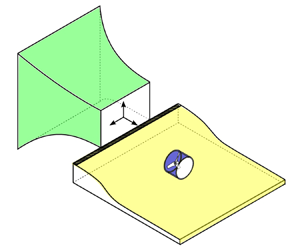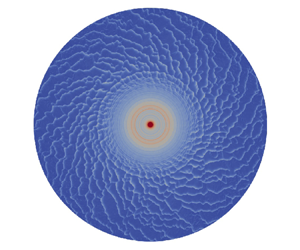Refine listing
Actions for selected content:
1417366 results in Open Access
AST volume 22 issue 1 Cover and Back matter
-
- Journal:
- Journal of Anglican Studies / Volume 22 / Issue 1 / May 2024
- Published online by Cambridge University Press:
- 15 April 2024, pp. b1-b2
-
- Article
-
- You have access
- Export citation
True ‘contradictions’ and conflicts in the Talmud
-
- Journal:
- Religious Studies , First View
- Published online by Cambridge University Press:
- 15 April 2024, pp. 1-14
-
- Article
-
- You have access
- Open access
- HTML
- Export citation
Aeroacoustics of a ducted fan ingesting an adverse pressure gradient boundary layer
-
- Journal:
- Journal of Fluid Mechanics / Volume 985 / 25 April 2024
- Published online by Cambridge University Press:
- 15 April 2024, R1
-
- Article
-
- You have access
- Open access
- HTML
- Export citation
Twisted Blanchfield pairings and twisted signatures III: Applications
- Part of
-
- Journal:
- Glasgow Mathematical Journal / Volume 66 / Issue 3 / September 2024
- Published online by Cambridge University Press:
- 15 April 2024, pp. 501-540
- Print publication:
- September 2024
-
- Article
-
- You have access
- Open access
- HTML
- Export citation
Dirichlet-type spaces of the unit bidisc and toral 2-isometries
- Part of
-
- Journal:
- Canadian Journal of Mathematics / Volume 77 / Issue 4 / August 2025
- Published online by Cambridge University Press:
- 15 April 2024, pp. 1271-1293
- Print publication:
- August 2025
-
- Article
-
- You have access
- Open access
- HTML
- Export citation
Moderatism and Truth
-
- Journal:
- Canadian Journal of Philosophy / Volume 53 / Issue 3 / April 2023
- Published online by Cambridge University Press:
- 15 April 2024, pp. 271-287
-
- Article
-
- You have access
- Open access
- HTML
- Export citation
Low-order modelling of three-dimensional surface waves in liquid film flow on a rotating disk
-
- Journal:
- Journal of Fluid Mechanics / Volume 985 / 25 April 2024
- Published online by Cambridge University Press:
- 15 April 2024, A4
-
- Article
-
- You have access
- Open access
- HTML
- Export citation
Protein click chemistry and its potential for medical applications
-
- Journal:
- Quarterly Reviews of Biophysics / Volume 57 / 2024
- Published online by Cambridge University Press:
- 15 April 2024, e6
-
- Article
- Export citation
Public Health Responses to CBRN Terrorism in the Middle East and North Africa
-
- Journal:
- Disaster Medicine and Public Health Preparedness / Volume 18 / 2024
- Published online by Cambridge University Press:
- 15 April 2024, e87
-
- Article
- Export citation
Rajabhakti: Languages of Political Belonging in Colonial Odisha
-
- Journal:
- Victorian Literature and Culture / Volume 52 / Issue 1 / Spring 2024
- Published online by Cambridge University Press:
- 15 April 2024, pp. 148-170
-
- Article
- Export citation
ASB volume 54 issue 2 Cover and Back matter
-
- Journal:
- ASTIN Bulletin: The Journal of the IAA / Volume 54 / Issue 2 / May 2024
- Published online by Cambridge University Press:
- 15 April 2024, pp. b1-b3
- Print publication:
- May 2024
-
- Article
-
- You have access
- Export citation
Examining profiles of convergence and divergence in reports of parental warmth: Links to adolescent developmental problems
-
- Journal:
- Development and Psychopathology / Volume 37 / Issue 2 / May 2025
- Published online by Cambridge University Press:
- 15 April 2024, pp. 927-943
-
- Article
-
- You have access
- Open access
- HTML
- Export citation
IDENTIFICATION ROBUST INFERENCE FOR MOMENTS-BASED ANALYSIS OF LINEAR DYNAMIC PANEL DATA MODELS – ADDENDUM
-
- Journal:
- Econometric Theory , First View
- Published online by Cambridge University Press:
- 15 April 2024, p. 1
-
- Article
-
- You have access
- Open access
- Export citation
Reinventing the Chinese City Richard Hu. New York: Columbia University Press, 2023. 306 pp. $32.00; £28.00 (pbk). ISBN 9780231211017
-
- Journal:
- The China Quarterly / Volume 258 / June 2024
- Published online by Cambridge University Press:
- 15 April 2024, pp. 576-578
- Print publication:
- June 2024
-
- Article
- Export citation
Salvaging Environmental Law
-
- Journal:
- Transnational Environmental Law / Volume 13 / Issue 1 / March 2024
- Published online by Cambridge University Press:
- 15 April 2024, pp. 1-11
-
- Article
-
- You have access
- HTML
- Export citation
On the Edge: Feeling Precarious in China Margaret Hillenbrand. New York: Columbia University Press, 2023. 408 pp. $35.00; £30.00 (pbk). ISBN 9780231212151
-
- Journal:
- The China Quarterly / Volume 258 / June 2024
- Published online by Cambridge University Press:
- 15 April 2024, pp. 573-574
- Print publication:
- June 2024
-
- Article
- Export citation
Feeding Iran: Shi'i Families and the Making of the Islamic Republic. Rose Wellman (Oakland, CA: University of California Press, 2021). Pp. 262. $34.95. ISBN 9780520376878
-
- Journal:
- Iranian Studies / Volume 57 / Issue 3 / July 2024
- Published online by Cambridge University Press:
- 15 April 2024, pp. 489-492
- Print publication:
- July 2024
-
- Article
- Export citation
COVID-19 Vaccinations, Business Activity, and Firm Value
-
- Journal:
- Journal of Financial and Quantitative Analysis / Volume 60 / Issue 4 / June 2025
- Published online by Cambridge University Press:
- 15 April 2024, pp. 1965-1993
- Print publication:
- June 2025
-
- Article
- Export citation





























